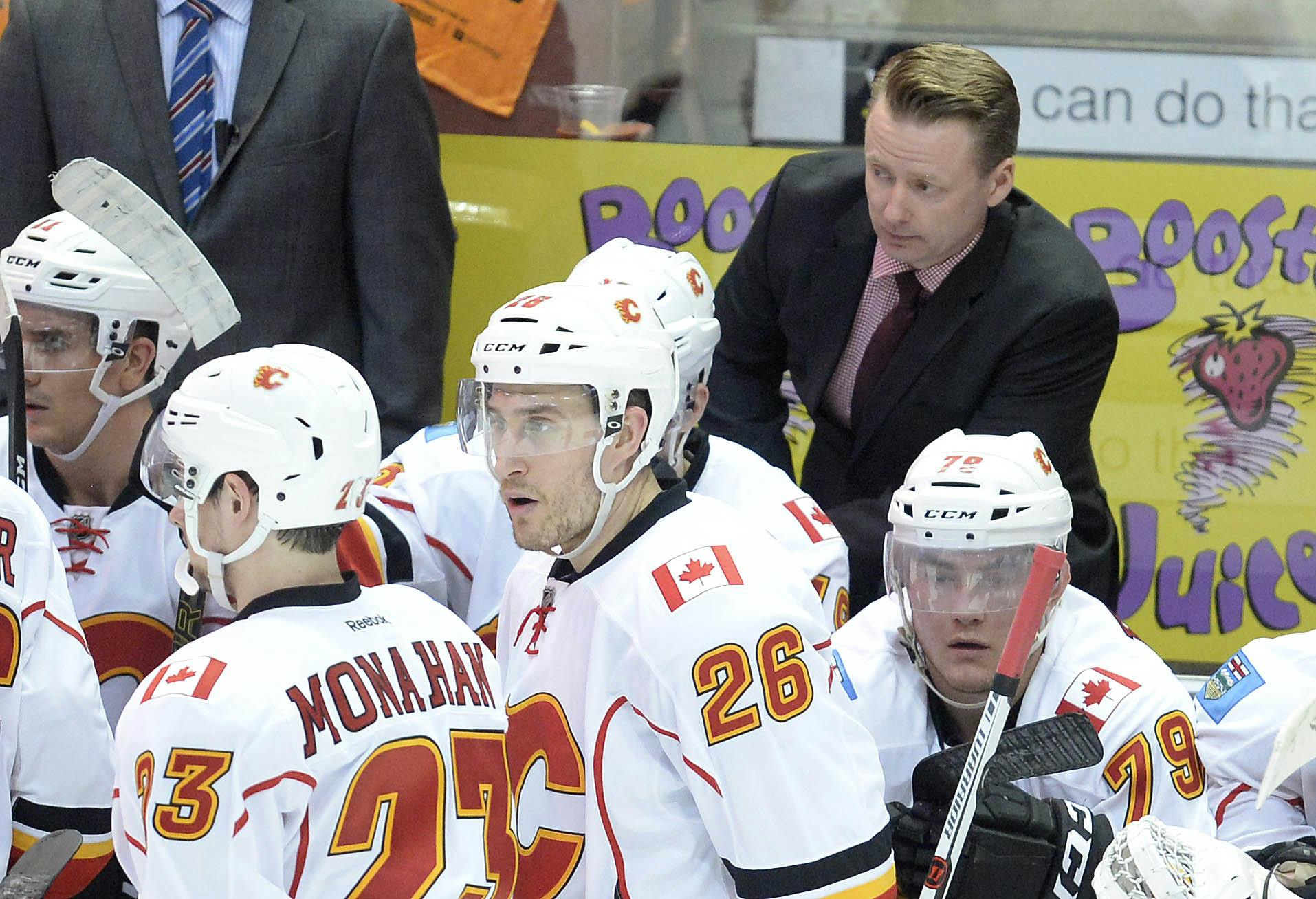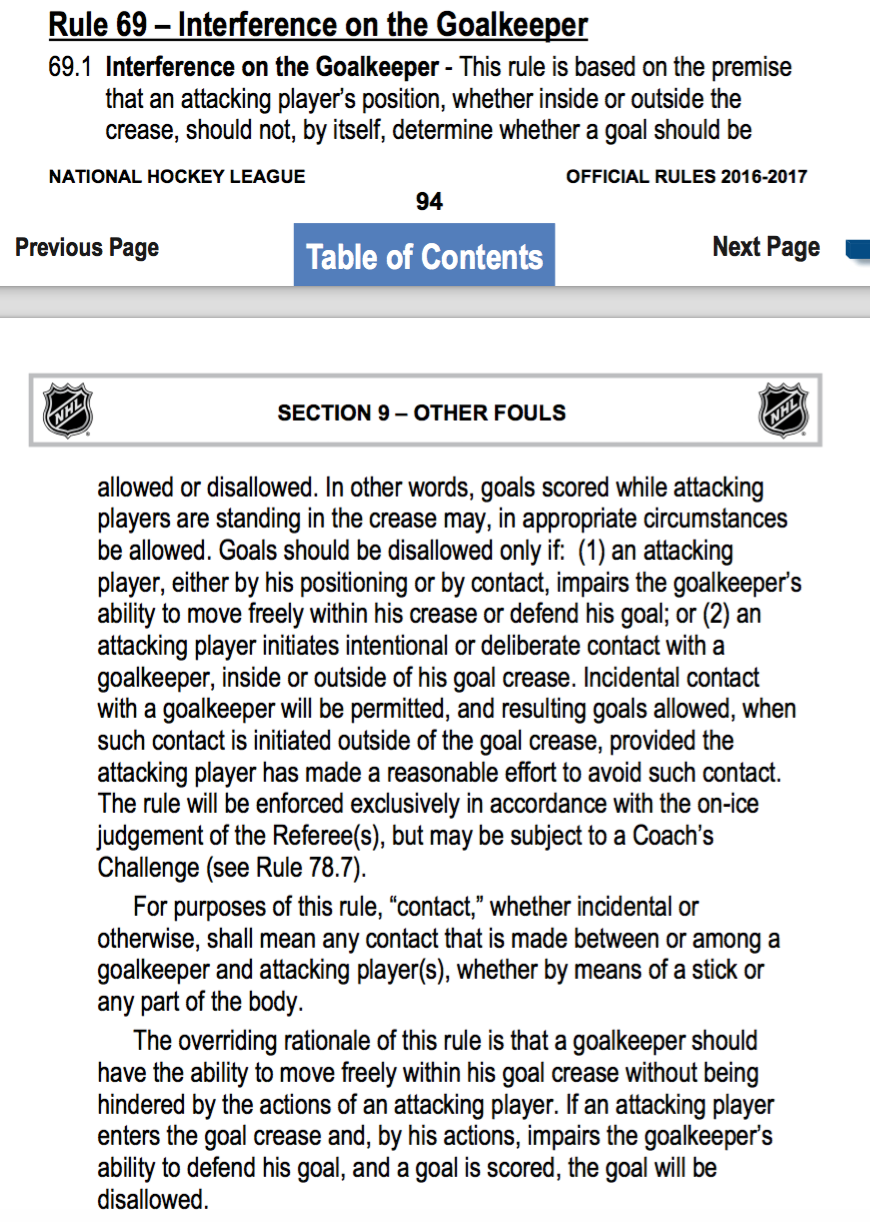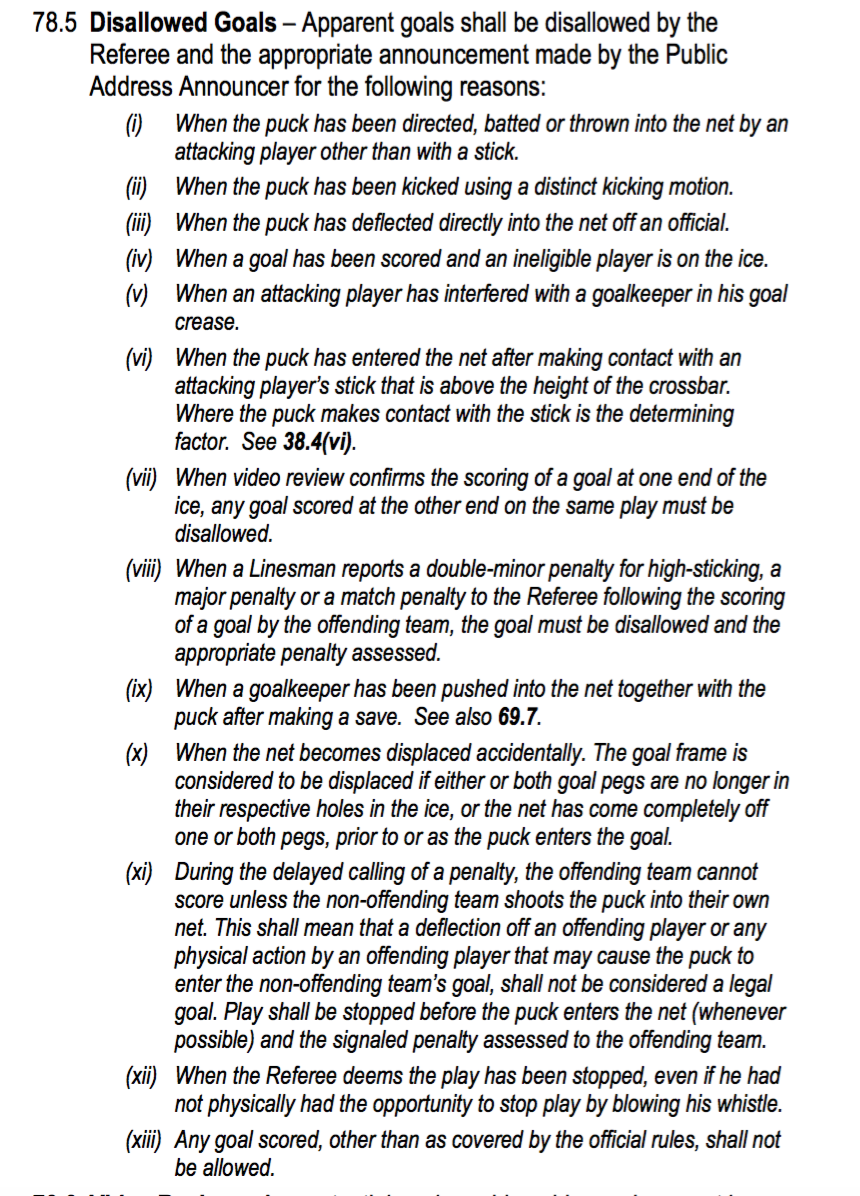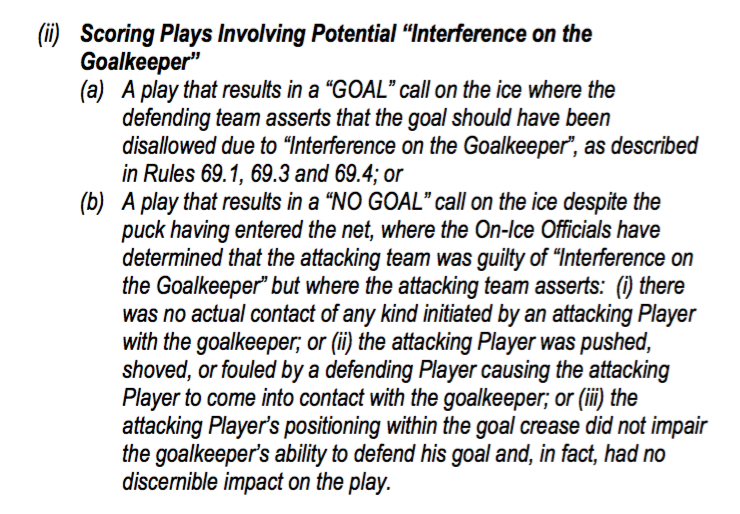Why didn’t Alex Chiasson’s second period goal count?

By Ryan Pike
7 years agoAt 9:47 of the second period of Game 2 between the Calgary Flames and Anaheim Ducks, the Flames appeared to go up 3-2 off a goal-mouth scramble. The Anaheim net came off its moorings, but not before the puck went into the net. Anaheim goalie John Gibson was starfished on the ice trying to make a save. Sam Bennett was also down on the ice near the far post. Alex Chiasson swept the puck between the sprawled out Gibson and Bennett. A lot of stuff was happening at once.
So, off to the video review we went. After a protracted review, the on-ice “no goal” call stood despite the puck clearly crossing the line on the replays. So what gives?
Why it didn’t count
Here’s the NHL’s stance:
At 9:47 of the second period in the Flames/Ducks game, the Situation Room initiated a video review to further examine if the puck crossed the Anaheim goal line before the net became displaced. The referee informed the Situation Room that Anaheim goaltender John Gibson was interfered with before the puck crossed the goal line. This is not a reviewable play and therefore the referee’s call on the ice stands – no goal Calgary.
The review was initiated by the Situation Room in Toronto to determine if the net was off before the puck went in. The referees told Toronto that Gibson had been interfered with. If the reasoning behind the goal originally being disallowed was contact with Gibson in the crease, then the NHL’s own explanation is incorrect because that would be a reviewable (and coach challenge eligible) play.
After the game, the Sportsnet panel noted that John Garrett asked the league between periods if it would have been subject to a coach’s challenge and he was told that it would have been.
The rules
The important rules in this situation are Rule 69 (Interference on the Goalkeeper) and Rule 78.5 (Disallowed Goals).
Rule 69
 Rule 78.5
Rule 78.5
Based on the available replays, the puck crossed the goal line and did so before the net came dislodged. Based on that and the explanation that the NHL cited, the goal would have counted if not for the perceived goalie interference.
The issue here is the way the goalie interference rule is written. The wording puts a lot of the onus on the on-ice officials to judge (a) where contact is initiated, (b) if it impaired the goalie’s ability to play the puck and (c) whether the player making contact with the goaltender could have avoided it. That’s a lot of stuff to judge at once.
A coach’s challenge?
The other issue is the coach’s challenge. In this specific situation, the referees have already judged there to be goalie interference and told Toronto in the review process for the net dislodging that there was interference. A coach’s challenge effectively would have Glen Gulutzan going to the same people that just decided there was goalie interference and saying, “Maybe there wasn’t?”
Here’s the standard for reversing the no-goal call, from the NHL Rulebook:

It probably wouldn’t have been worth risking the timeout, especially in a close game.
In other words
The officials felt that the combination of contact between Gibson and one – or both – of Chiasson and Bennett was enough to impede Gibson’s ability to attempt to make saves. Players are allowed to go into the blue paint to contest loose pucks, but evidently the officials must have felt that the contact in this situation went beyond that.
Recent articles from Ryan Pike





